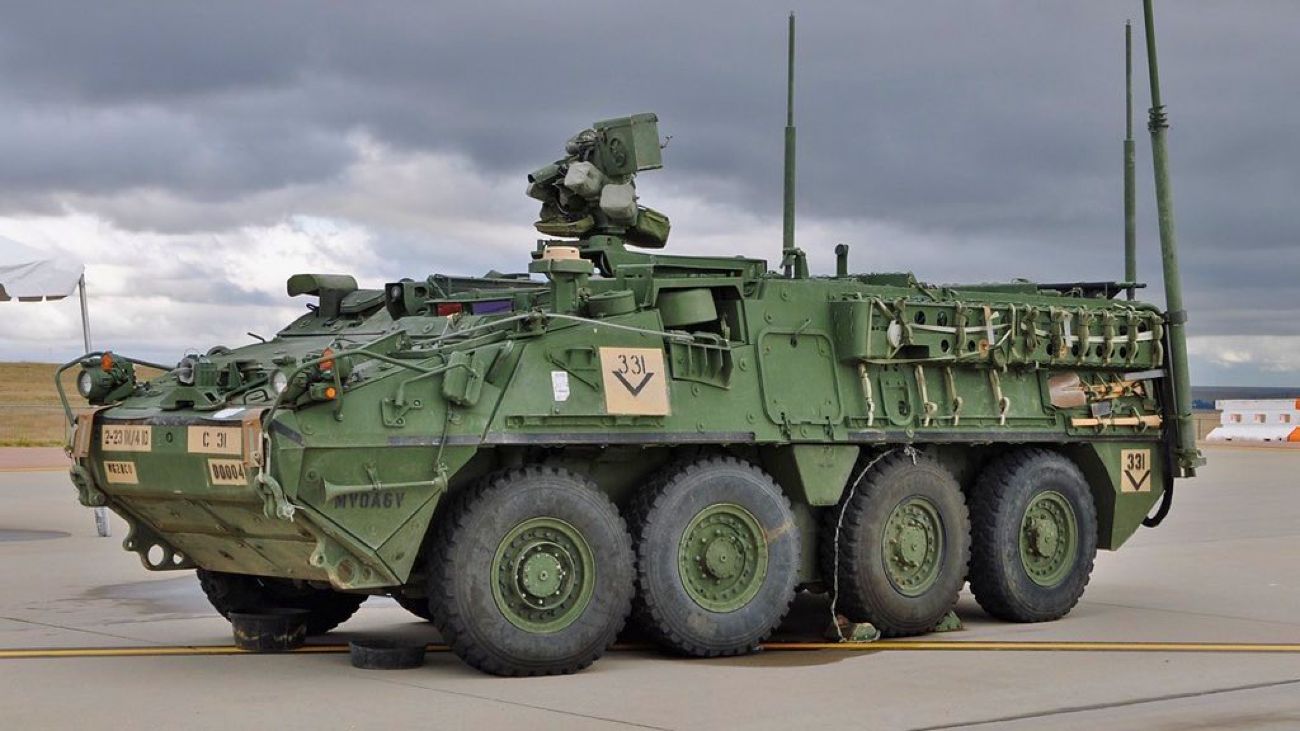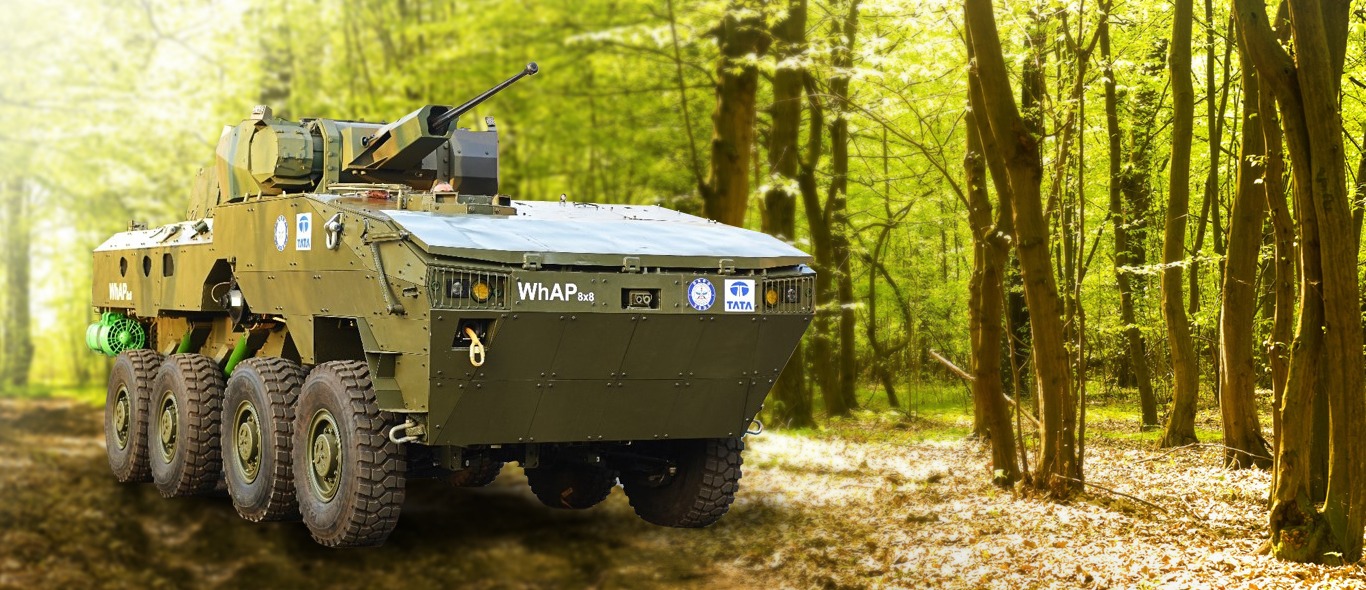In an age when the government emphasis is on ‘Make in India,’ the homegrown Wheeled Armoured Platform (WhAP) is facing tough competition from the American Stryker armored vehicles. US National Security Advisor Jake Sullivan is on an India visit, and the negotiations on the acquisition are nearing finalization.
The Indian Defense Ministry has proposed a three-phase plan for the project. After the limited off-the-shelf purchase of Strykers through the Foreign Military Sales (FMS) route, the joint production will be in India. This would also pave the way for the development of futuristic armored vehicles.
The Strykers are purchased to be deployed in high-altitude areas along the border with China in regions like Eastern Ladakh and Sikkim. The Indian Army is looking to modernize its BMP-II vehicles of Russian origin and replace them with wheeled and tracked Infantry Combat Vehicles.
The Army also requires ICVs for amphibious operations. The Stryker doesn’t come in an amphibious variant, for which the Army will be looking at homegrown alternatives.
The Stryker variants include Infantry Carrier Vehicles, Mobile Gun Systems, medical evacuation vehicles, fire support vehicles (ICV), anti-tank guided missile carriers, and reconnaissance vehicles.
It has been 20 years since the Stryker made its debut during Operation Iraqi Freedom II. It was during this operation that the 3rd Brigade, 2nd Infantry Division (now 1-2 Stryker Brigade Combat Team) earned its nickname ‘Ghost Soldiers’.

The Ghost Brigade was the first to operate the vehicle. The occupants of the armored vehicle were kept safe from conventional weapons like rocket-propelled grenades. The defeat of Saddam’s Army led to the rise of the use of Improvised Explosive Device (IED).
The Stryker’s armor was tough before it was hit by a large IED. The Stryker sustained extensive damage, but the crew came out unscathed. It earned the reputation amongst the US Armed Forces that “not only could these trucks bring you to the fight, but they could bring you home.”
The Stryker is an 8-wheel drive combat vehicle developed by General Dynamics Land Systems-Canada for the US. It is powered by a Caterpillar C7 engine with 350 horsepower, has a range of 483 kilometers, and can run at a maximum speed of 100 km/h. It has bolt-on ceramic armor for enhanced protection and can withstand improvised explosive devices. It is compatible with Chinook helicopters already in the Indian Air Force’s inventory.
India had expressed concerns about the Stryker armored fighting vehicle being underpowered. The Caterpillar C7 350 horsepower engine will struggle at high altitude regions due to the rarefied atmosphere. The US has offered to upgrade the Stryker with the Cummins-developed Advanced Combat Engine with 750 horsepower.
Unlike the F-414 engine deal, the Strykers deal has received mixed reactions from the Indian defense fraternity. They see it as a “terrible” move at every level, considering India has indigenous capability for it.
Shiv Aroor, a senior Indian defense journalist, said: “(It is) wasteful co-production of capability already with firms like Tata, Mahindra, Kalyani, etc. Stryker ecosystem is in Canada, why should GOI (Government of India) benefit Canada.” He added: “It is a waste of ‘credits’ under India-US DTTI (Defence Technology and Trade Initiative).”
The Indian Wheeled Armoured Platform
Indian defense giants Tata, Mahindra, and Kalyani had joined hands with the Defence Research and Development Organisation (DRDO) to build the armored vehicle known as the Wheeled Armoured Platform (WhAP). The platform was unveiled at Defexpo 2014 in Delhi. It was tested at high altitudes, and the Indian Army was impressed by its capabilities.

Dr. S. Guruprasad, former director of Research and Development Establishment (Engineers), a DRDO laboratory, at Dighi, told the EurAsian Times: “WhAP is an excellent, proven technology. It has been tested at high altitudes. The Army was impressed by its performance.” Unlike the Stryker, WhAP is amphibious.
An armored vehicle has three distinct features: mobility, which defines the capability to negotiate a particular terrain, armored protection, and weapons it carries. WhAP holds well agains Stryker. WhAP can carry 2+9 people, while Stryker can carry 3+8 people. While the Indian combat vehicle weighs 24.5 tons, the Stryker weighs 20.3 tons. WhAP’s power-to-weight ratio is 25, compared to Stryker’s 17.24.
WhAP also has amphibious capability and nuclear sensors that are absent in Stryker.
Tata has already delivered the first units to the Indian Central Police and Indo-Tibetan Border Police (ITBP), and the vehicles are more likely to operate in the border region of Ladakh. They are priced around 2.6 million euros, about 30 to 50% cheaper than their Western competitors.
The WhAP can achieve a top speed of 100 kmph and has a maximum range of 500 km. It has been tested for high-altitude operations in Eastern Ladakh. WhAP’s amphibious drive mode allows it to cross streams at up to 10kph with onboard water jets. The fuel tanks are located outside, improving crew safety.
To protect against landmines, the back-to-back seats are linked to the roof. It has three gun ports and vision blocks for firing on each side. There are two hatches for patrolling and a hydraulics-operated single rear-opening door. It has NBC (Nuclear, Biological, and Chemical) environmental protection.
At the front end, it has a slanted armored plate, also known as a glacis plate. It is one of the strongest pieces of armor in the vehicle. The inclined position of the armored plate provides superior mine protection.
It is equipped with the Kongsberg 30-mm cannon, which can be fired remotely. It can fire high-explosive incendiary (HEI), armor-piercing incendiary (API), and armor-piercing fin-stabilized discarding sabot tracer (APFSDS-T) rounds with a 30-mm caliber. It has an effective range of 3,000 meters. The 40-mm grenade launchers are used as a secondary weapon. It can accommodate anti-tank missiles or a 12.7mm machine gun.
- Ritu Sharma has been a journalist for over a decade, writing on defense, foreign affairs, and nuclear technology.
- The author can be reached at ritu.sharma (at) mail.com
- Follow EurAsian Times on Google News




